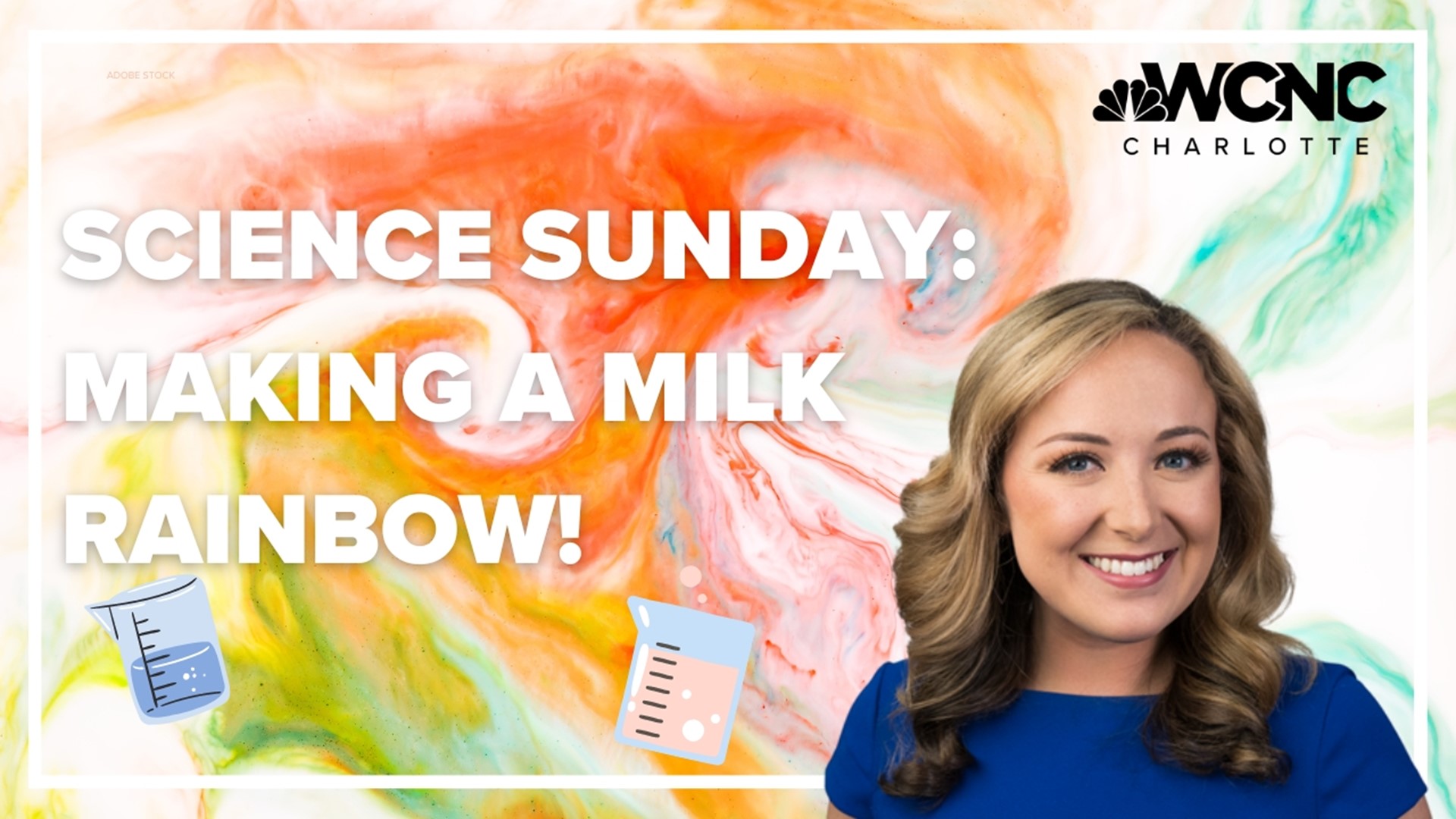CHARLOTTE, N.C. — The weather has been so gorgeous this weekend, so I wanted to feature an easy science experiment to make something beautiful: a “milk rainbow”.
Now, this is a more common science experiment and kids may have already seen something similar in the classroom. Let’s recreate and break down what makes it a science Sunday!
PREVIOUSLY: Science Sunday: Snowstorm in a Jar
What you’ll need
- Milk (anything but fat-free)
- Food coloring
- Liquid dish soap
- Cotton swabs
- A glass pan or flat plate with some edges
Step 1: Pour milk into a glass pan or plate until the bottom is covered completely.
Step 2: Add one drop from each coloring of food coloring in a horizontal line.
Step 3: Dip a cotton swab near the colors. What do you notice?
Step 4: Now try again after rubbing liquid dish soap on your cotton swab. A rainbow should appear!
What is happening?
When you dip a cotton swab in the milk with nothing on it, well, nothing happens.
However, when the cotton swab and liquid dish soap is added to the milk, the soap reduces the surface tension of the milk and reacts with the fat and water molecules. This interaction causes the fat particles in the milk to move and create swirls of color.
What is surface tension?
From a scientific perspective, surface tension is the property of the surface of a liquid that allows it to resist an external force, due to the cohesive nature of its molecules.
What is a surfactant?
A surfactant is a chemical that lowers the surface tension of water. Some chemicals have a part that wants to interact with the water (hydrophilic) and a part that does not (hydrophobic).
When such a chemical is added to water, one part of it will try to get close to the water while the other part will push away from the water. This pulling and pushing separate the water molecules from each other.
As the water molecules move further away, they can not contract as much at the surface, reducing the surface tension.
Contact Brittany Van Voorhees at bvanvoorhe@wcnc.com and follow her on Facebook, Twitter and Instagram.

